Using Oracle Work & Asset Cloud Service to Assess Utility Supplier Performance
As complex, multifunctional organizations, utilities usually enlist the services of various suppliers to fulfill needs including asset equipment, IT services, and more. In this blog, we cover the importance of continually assessing supplier performance and share how HEXstream uses Oracle Work & Asset Cloud Service (WACS) to provide analytics that help utilities determine current and historical supplier effectiveness. As a result, utilities can expect to benefit from a more efficient supply chain and better-informed decisions about which vendors are retained over time.
Why is it important for Utilities to assess supplier performance?
Utilities stand to achieve operational efficiencies in the procurement process by assessing their suppliers and vendors on a regular basis by using data and analytics. Utilities should consider many factors like speed-to-shelf, precision, efficiency, and accuracy when evaluating existing vendors vying to become their long-term partners. By measuring and monitoring supplier performance on an ongoing basis, companies can realize some significant benefits including:
- Improved collaboration between suppliers that can lead to better coordination and enables the company and supplier to better meet the company's business objectives.
- Better insight into supplier timeliness
- Visibility into the quality of materials and services rendered over time
- Help with strategic sourcing and resource allocation
Supplier performance management also provides in-depth visibility into the risk a supplier may pose to the utility, allowing the utility to proactively put measures in place to reduce or eliminate that risk as it relates to your supply chain. These risks may include security threats, budgetary red flags, equipment performance issues, and more.
Using Oracle Work & Asset Cloud Services
Using data from Oracle Work & Asset Cloud Services (WACS), utilities can evaluate Vendor Performance by calculating metrics that can be presented in very business-centric visualizations and reports. Below are a few metrics we recommend monitoring.
Total Line Items by Delivery Time: shows how many line items were delivered by the planned delivery time. We can further segment it by vendor.
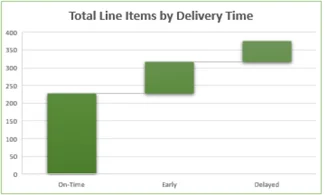
NCMs Processed - Will give insights on total number of Non-Conforming Materials (NCMs) by Year. Non-Conforming Materials are any product or parts that are defective, counterfeit, or do not meet requirements.
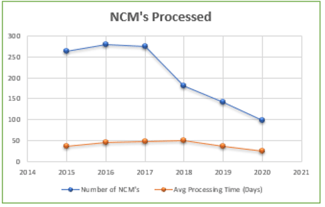
Number of NCMs by Vendor - Displays insights on how many NCMs exist per vendor, informing analysts of the best- and worst-performing vendors.
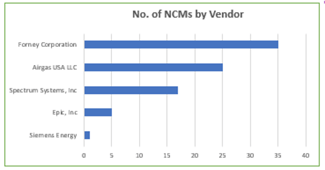
NCM Dollar Value – Shares the total cost of the Non-Conforming Materials each year.
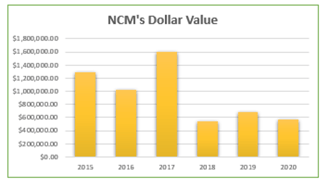
Top Vendors with the Best PO Fulfillment – Displays the top performing vendors sorted by Purchase Order fulfillment time.
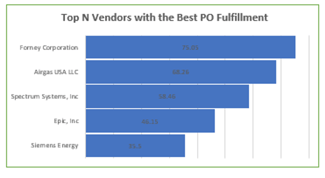
Vendors with the Worst Purchase Order Returns – Displays the Worst Performing vendors as determined by PO Returns in the event of equipment malfunction or other problems with an order.
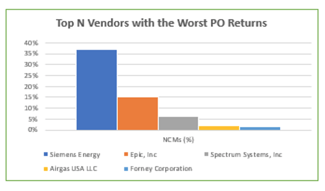
In Conclusion
Powerful analytics and reports can be built using WACS data and deep insight can be gained into how each vendor impacts the business. Regular measurement, analysis, and management of vendor performance can cut costs, alleviate risks, drive continuous improvement, and ultimately increase end‑user satisfaction.
By implementing and taking advantage of vendor performance analytics, utilities should expect to benefit from mitigated supply chain risk, protected brand reputation, better supplier communication, and process optimization. The end result is a more efficient organization that minimizes waste and maximizes the value of its relationships with its vendors and suppliers. To learn more about the work HEXstream has done using Oracle Work & Asset Cloud Services, check out our latest success story.
Let's get your data streamlined today!
Other Blogs
Five Keys to Keeping Your Cloud Optimized
The cloud can deliver extraordinary flexibility, scalability, and performance, which is why so many utilities are flying to the cloud. But while the c
The ESG Movement for Utilities
“ESG-oriented investing has experienced a meteoric rise. Global sustainable investment now tops $30 trillion—up 68 percent since 2014 and tenfold sinc
